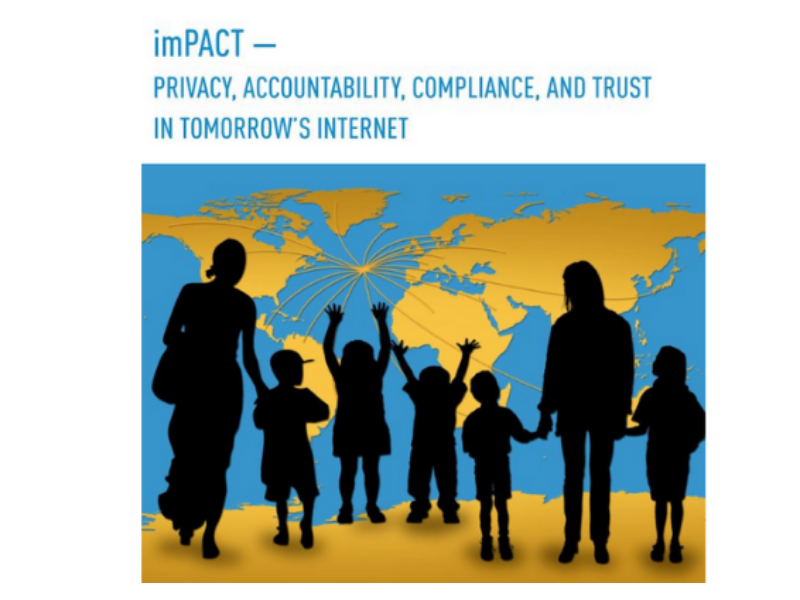
imPACT
Privacy, Accountability, Compliance, and Trust in Tomorrow’s Internet
Cornelia Schmidt
01 February 2015
31 January 2021
EC funded project
The Internet has evolved from a mere communication network used by tens of millions of users two decades ago, to a global multimedia platform for communication, social networking, entertainment, education, trade and political activism used by more than two billion users.
This transformation has brought tremendous benefits to society, but has also created entirely new threats to privacy, safety, law enforcement, freedom of information and freedom of speech. In today’s Internet, principals are amorphous, identities can be fluid, users participate and exchange information as peers, and data is processed on global third-party platforms. Existing models and techniques for security and privacy, which assume trusted infrastructure and well-defined policies, principals and roles, fail to fully address this challenge.
The imPACT project addresses the challenge of providing privacy, accountability, compliance and trust (PACT) in tomorrow’s Internet, using a cross-disciplinary and synergistic approach to understanding and mastering the different roles, interactions and relationships of users and their joint effect on the four PACT properties. The focus is on principles and methodologies that are relevant to the needs of individual Internet users, have a strong potential to lead to practical solutions and address the fundamental long-term needs of the future Internet. We take on this challenge with a team of researchers from relevant subdisciplines within computer science, and with input from outside experts in law, social sciences, economics and business. The team of PIs consists of international leaders in privacy and security, experimental distributed systems, formal methods, program analysis and verification, and database systems. By teaming up and committing ourselves to this joint research, we are in a unique position to meet the grand challenge of unifying the PACT properties and laying a new foundation for their holistic treatment.
Category:
- Operational risk, management and analytics
Vertical Category:
- ICT
Resources for EU Research
Resources for SMEs
News & Events
Reports
Cyberwatching.eu has received funding from the European Union’s Horizon 2020 research and innovation programme under grant agreement No 740129. The content of this website does not represent the opinion of the European Commission, and the European Commission is not responsible for any use that might be made of such content. Privacy Policy | Disclaimer / Terms and Conditions of Use

